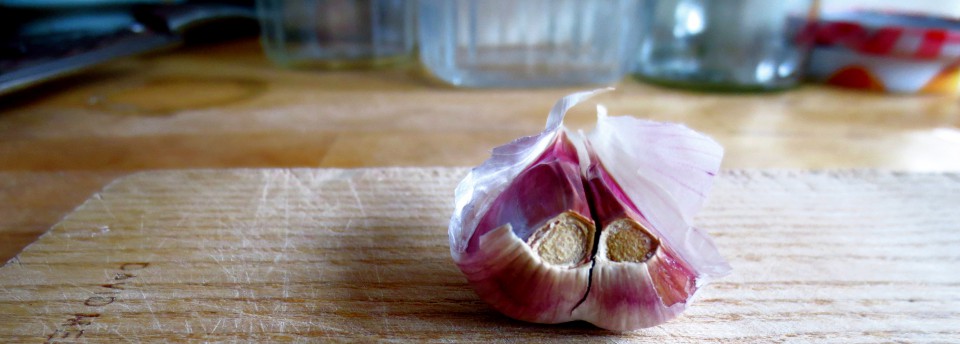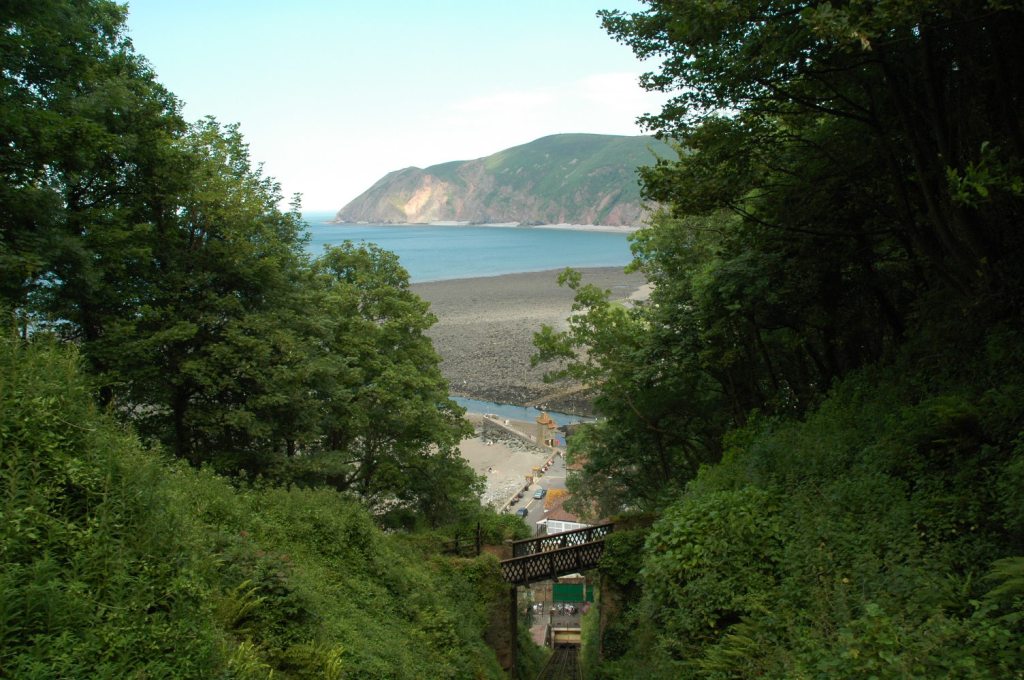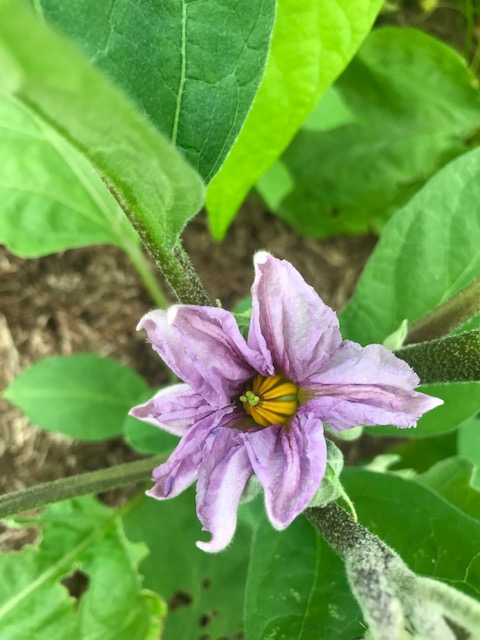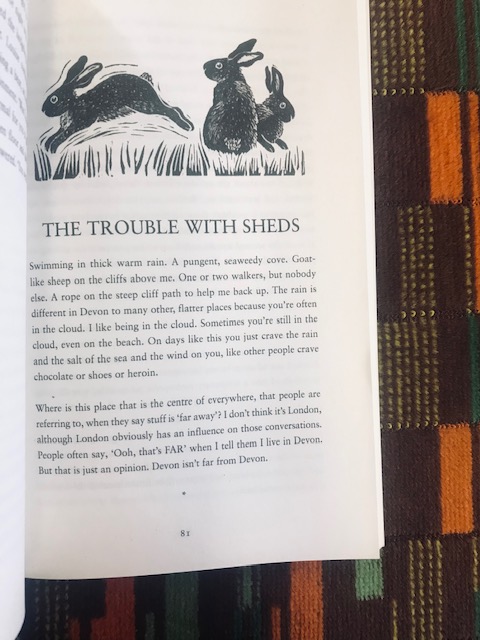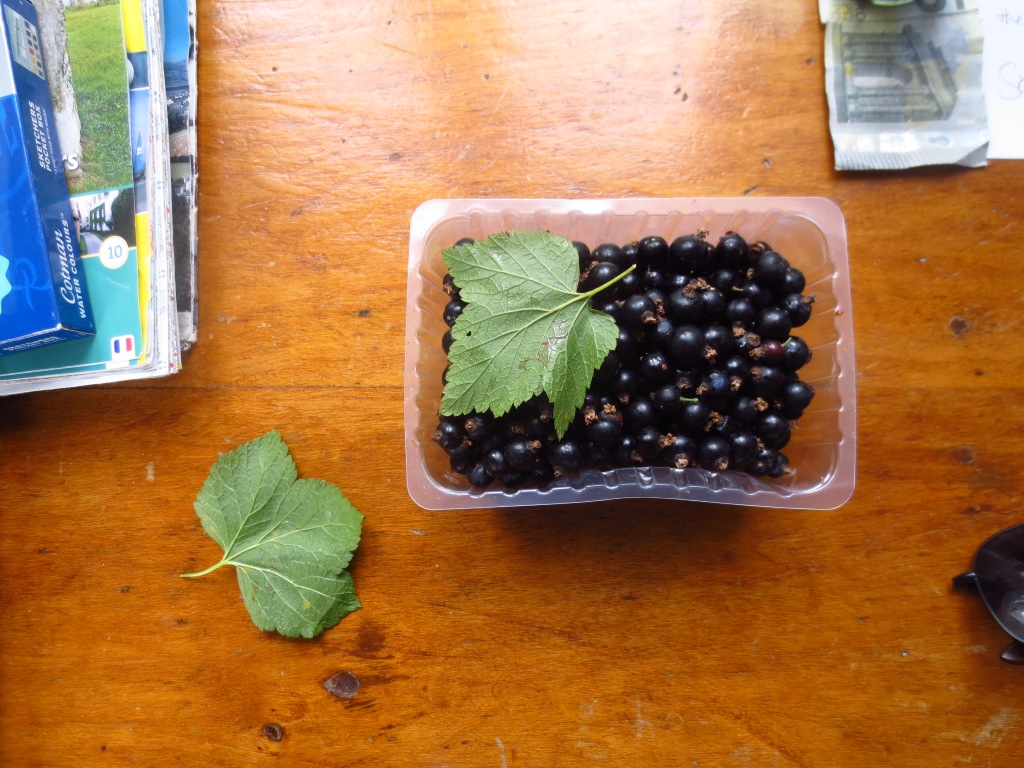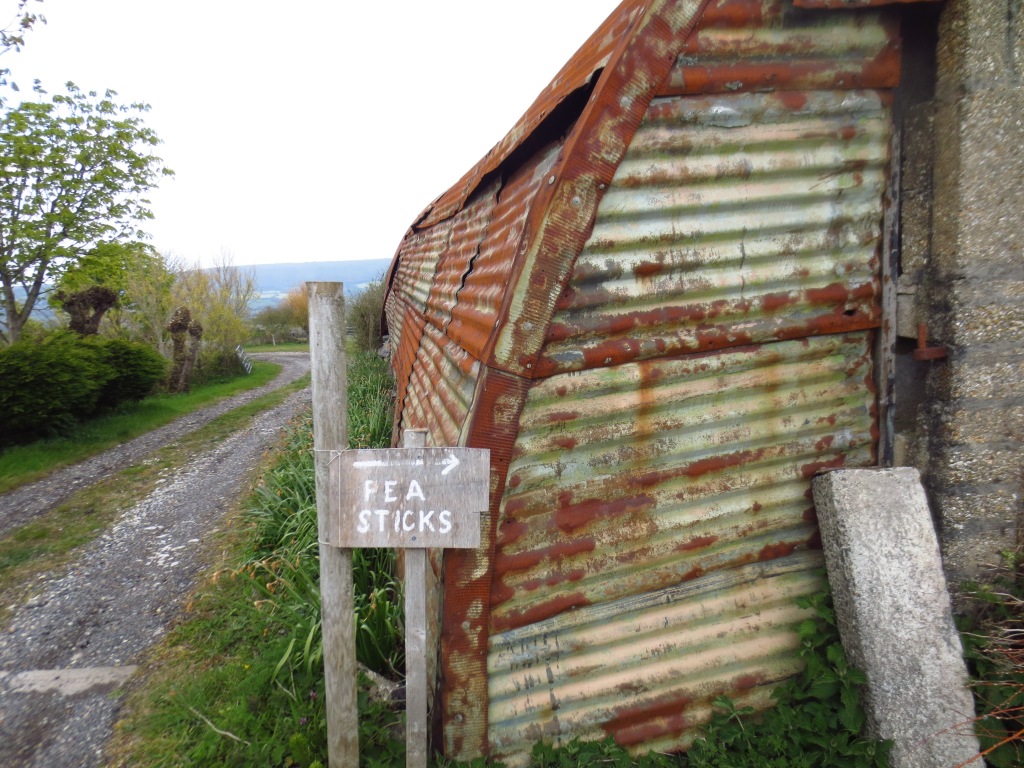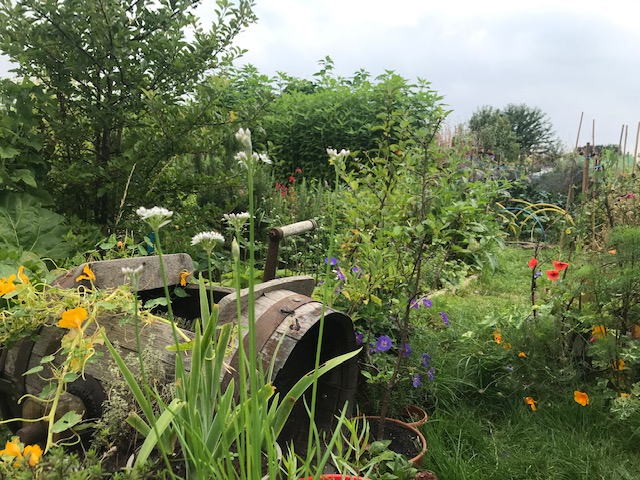
I can’t write about anything other than the allotment. Not a shop or a bread board or a country or a cafe quite invades me like the bike ride to a nondescript set of gates opening out onto a swathe of plots containing sunflowers, dwarf French beans, plush lavender, men. There are quite a number of men here, red-faced, brown-ankled, wrists the colour of Marmite. Their shirts flap open, all C&A and to the elbow, long shorts, dusty sandals.
There are the usual suspects: my elegant, white-haired neighbour bending down behind her hollyhocks. She wears nifty three quarter length slacks that show off her malt-coloured calves and a pair of shoes in deep olive that seem too good for gardening. I wear jeans with the bottom hanging off, ripped in an accident to do with a door knob. I wear filthy shoes, a kind of ‘gardening white’. There is no point appearing jaunty or fashionable here, but it is nice to be relatively laundered. A hat is important and sunglasses which we take off in order to establish eye contact.
Sometimes I don’t want to be sociable. There is always a moment when I need to feel free to go. It could be after an hour, or after some sun and a nice conversation. I might leave with a collection of things: baby carrots thinned to make room for more mature, upstanding carrots, a handful of flowering thyme, stalks of pungent mint. Everything is dusky with soil, my pockets contain soil, my rucksack is sandy with soil, my fingernails etc. Or sometimes it is enough that I can stand in my windowless greenhouse and smell the tomato plants and look at the way the onions have collapsed into thick green ropes.
The allotment is in a suburb of London. It runs beside the train tracks and twice an hour the train hoots by. This is typical apparently because the men who worked on the railroad needed somewhere to grow vegetables, to feed themselves. This is why allotments tend to run along rail tracks.
This is looking like my last growing season here and my allotment is still a disgrace, it never made it into one of those amazing, potager-type plots, I never got the paths right, I never eradicated the bindweed, I still have a rat under my shed. Or whatever it is. Creeping buttercup, weed seeds, blackcurrants that got eaten as soon as they ripened, a dead bird. But there is something about being hailed by a late middle-aged man, and him saying, I was just going! as I get off my bike, my jumper snagged by blackberry thorns, knowing he wouldn’t now leave for a bit because who can resist a bit of a chat about radishes, about his trip to Rye? The place he always goes. I once gave him a pot of cyclamen as a thank you for all the tomatoes, but he refused saying his wife would think he was having an affair.
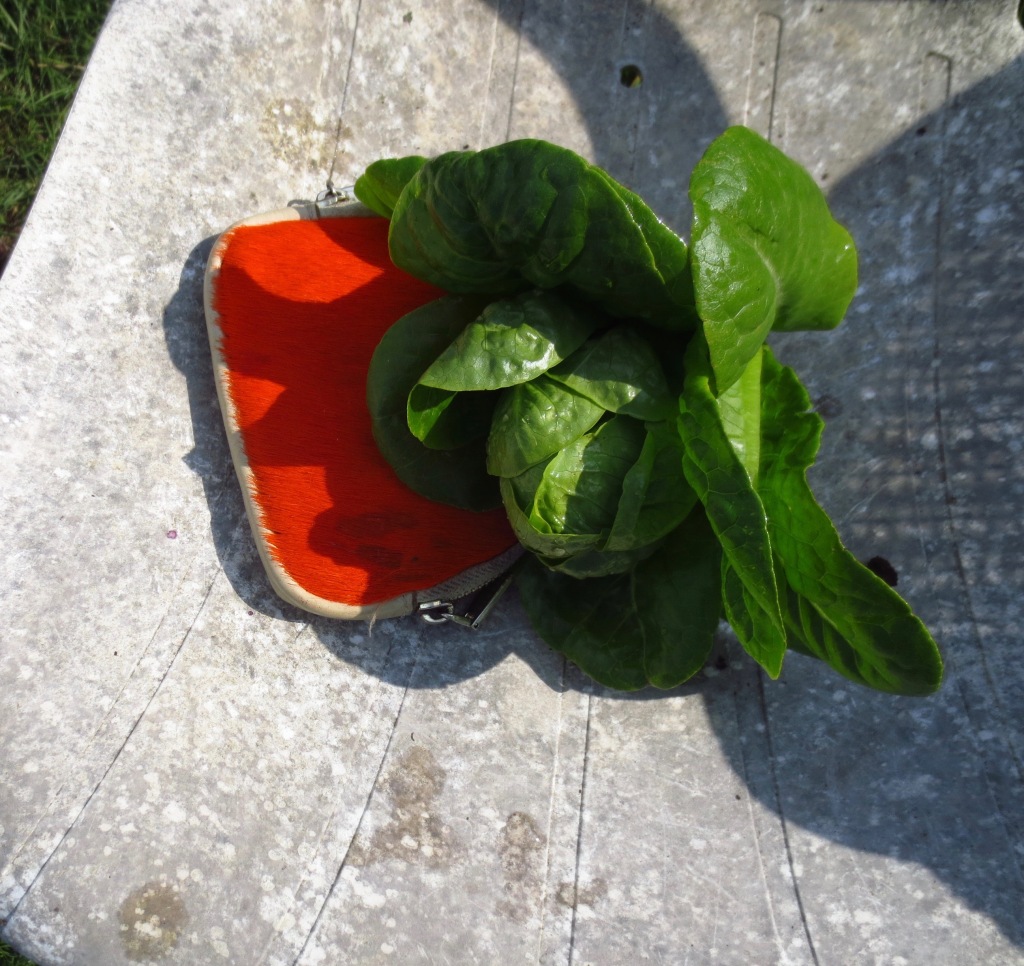
Anyway, it is one of those magical places that is also ordinary. There were so many photos I wanted to put into this post, but I couldn’t find one that captured the feeling of standing in the midst of it all one afternoon and thinking, I made that. I don’t even remember putting it into the ground, but it has naturalised and now doesn’t need me anymore. Doesn’t even need watering. I quite like the one of the lettuce and the camera bag though, and I can remember the smell of the sweet peas I brought home and couldn’t find a vase big enough for.

